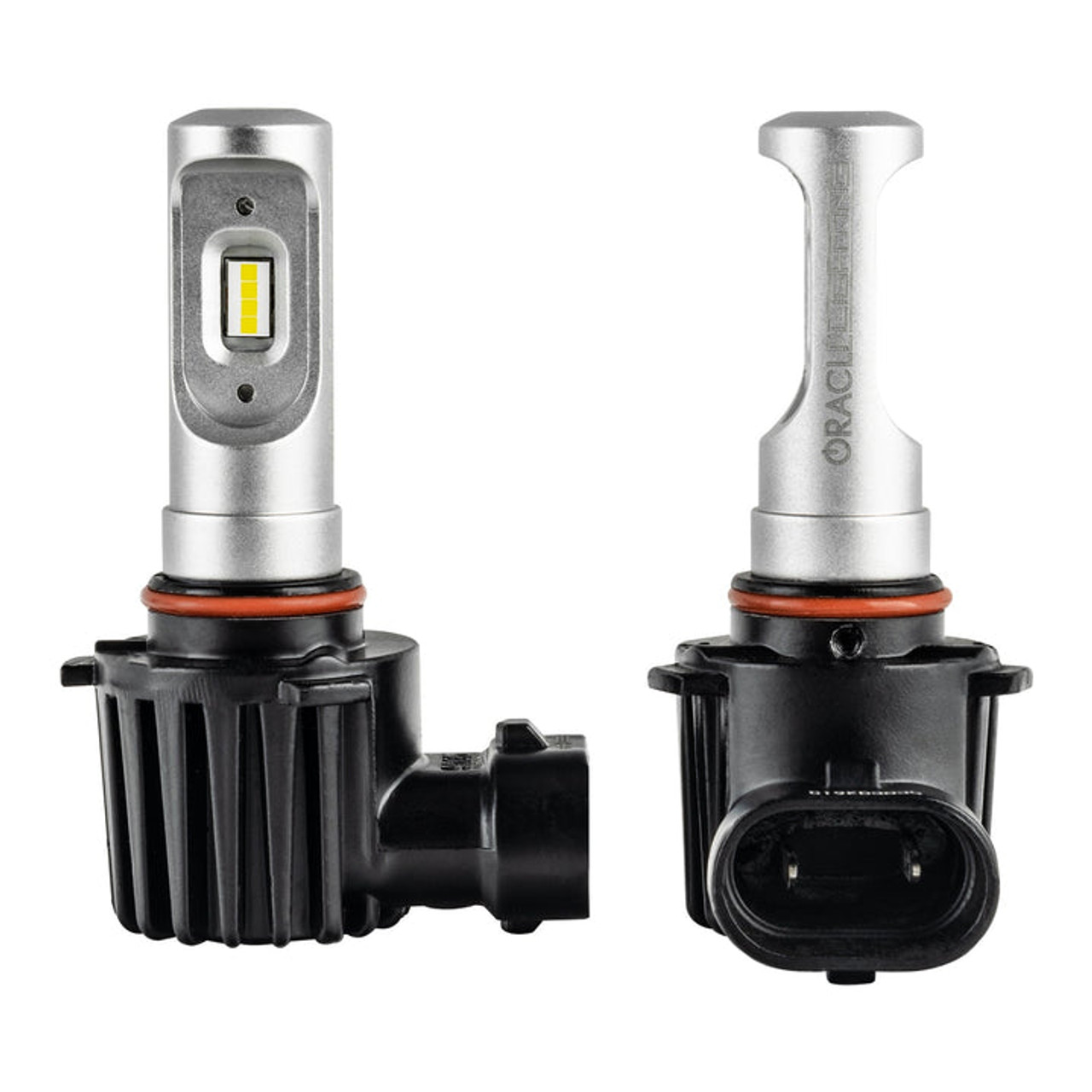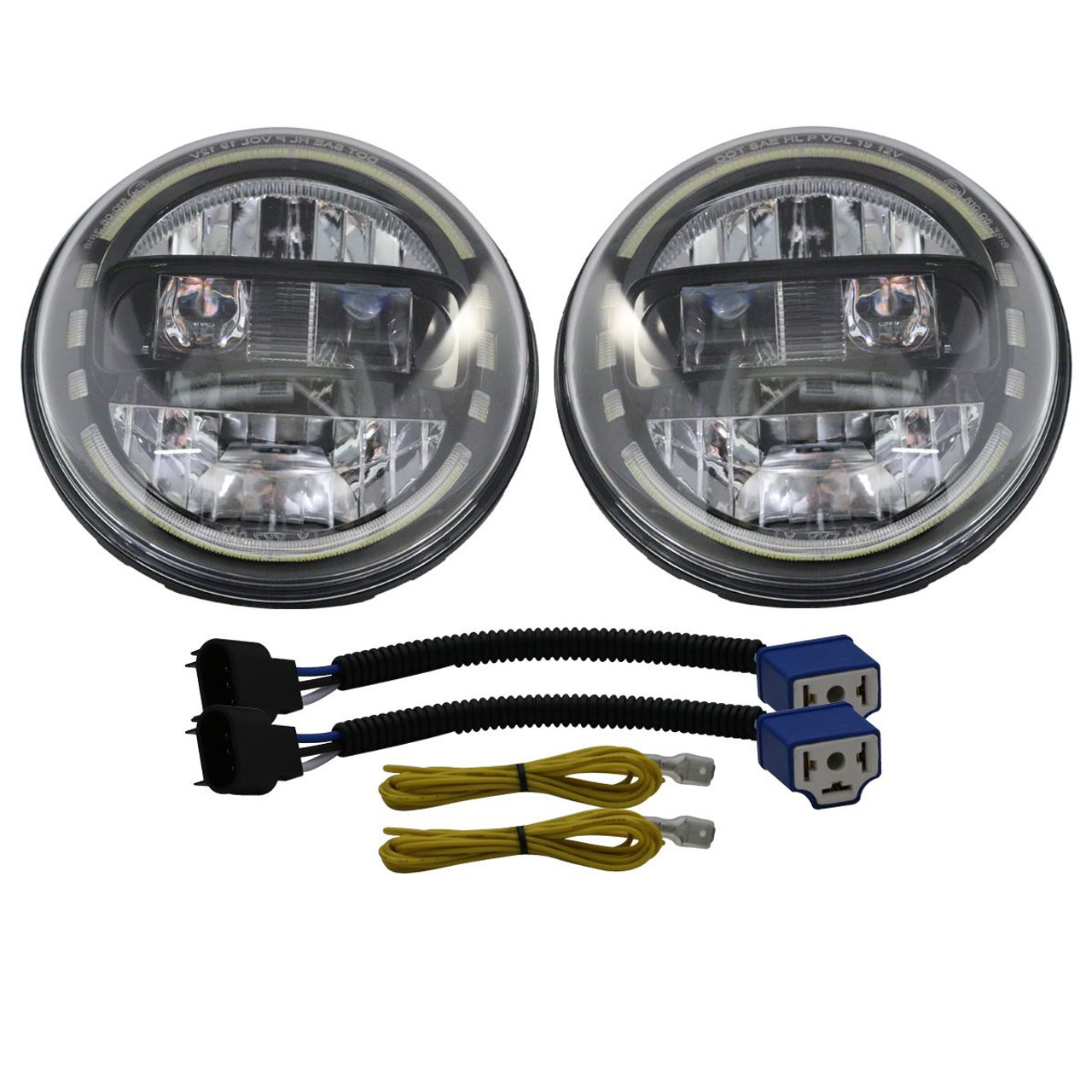How To Choose The Best LED Headlights For Your Car?
6th Sep 2024

Struggling to see on dark roads at night? Choosing the best LED headlights can
significantly enhance your driving experience.
With so many LED automotive lighting options, how do you find LED headlights that fit your car perfectly and meet legal standards? It’s not just about brighter light; it’s also about proper installation and compatibility..
In this blog, we'll dive into the specifics of automobile LED headlights, guiding you through the selection process to ensure you make an informed choice. Let’s first understand why LED headlights are a better choice.
Halogen vs Led Headlights
With advancements in technology, the debate between halogen and LED headlights continues to be a relevant topic for drivers. Below, we explore the major differences and benefits of each type:
Cost and Availability
Halogen bulbs are a traditional choice and are generally more affordable. They are also widely available, making them a convenient option for quick replacements.
- Halogen bulbs are more affordable and can be found at any auto parts store.
- They are universally compatible, fitting seamlessly into most existing car light fixtures.
- LED headlights tend to be pricier initially but may offer cost savings in the long run due to their longevity.
Performance and Efficiency
LED automotive lighting is known for its superior brightness and efficiency, greatly enhancing safety and visibility on the road. LEDs also score high on energy efficiency, benefiting both the environment and your vehicle’s battery life.
- LED automotive lighting shines brighter, improving visibility for safer night driving.
- LEDs consume less power, which can slightly improve vehicle fuel efficiency.
- The longer lifespan of LED headlights means fewer replacements, a bonus for both convenience and eco-friendliness.
Durability and Maintenance
Automobile LED headlights are designed to withstand rough conditions, making them a durable choice in automotive lighting. They maintain cooler operational temperatures, which extends their lifespan and reduces maintenance needs.
- Automobile LED headlights are robust against vibrations, making them ideal for rugged driving.
- They operate at cooler temperatures, reducing the risk of overheating and damage.
- Halogens, while durable, tend to have a shorter lifespan and require more frequent changes.
Installation and Fit
While halogen bulbs are straightforward to install, upgrading to LED headlights may require some technical expertise. This is especially true for older vehicles, which might need adjustments to be compatible with LED systems.
- Halogens are typically plug-and-play, making them easy to install without any vehicle modifications.
- Upgrading to LED headlights might require additional adjustments or kits, especially in older vehicles.
- Newer car models often come with LED automotive lighting as a standard feature, simplifying the upgrade process.
Light Quality and Regulation
The quality of light from LEDs is clearer and more directed, which can drastically improve night-time visibility. However, it’s crucial to ensure they are installed and aligned correctly to avoid issues with glare and to comply with road safety regulations.
- LEDs provide a more focused and intense light, which can extend the driver's field of vision.
- Proper installation is crucial to prevent LED headlights from glaring at other drivers.
- Halogens offer a softer light, which is less likely to cause glare but provides less illumination compared to LEDs.

How To Choose The Right LED Headlights For Your Car?
With the vast array of options available, it’s crucial to understand the factors that determine the best fit for your vehicle. Here’s a guide to help you navigate the specifications, compatibility, and quality of LED headlights, ensuring you make an informed decision.
1. Compatibility
Ensuring compatibility is crucial when selecting the best LED headlights for your car. It's important to know the exact bulb size and type required by your vehicle, which can be found in the owner's manual or via an online bulb finder. Automobile LED headlights are available in various sizes like H1, H4, H7, etc., and not every LED headlights bulb fits all car models. Always confirm that the LED headlights you choose match your vehicle’s specific headlight housing and electrical connectors.
LED headlights must be compatible with your car’s system. Some vehicles require specific types due to unique headlight housing or electronic setups, limiting your options to certain LED automotive lighting types. When selecting LED headlights bulbs, ensure they match your car’s voltage and current specifications to prevent electrical issues or damage.
2. Brightness and Color Temperature
Brightness is a critical factor in selecting LED headlights. The best LED automotive bulbs provide a high lumen output, typically between 6,000 to 10,000 lumens per pair, significantly enhancing night-time driving. This high output ensures the road ahead is well-lit, improving both safety and visibility. However, it's crucial to balance brightness to avoid glare that could impair other drivers' vision.
Color temperature significantly affects the effectiveness of LED headlights. LED automotive lighting with a color temperature around 6,000K to 6,500K emits a bright, daylight-like light. This range is ideal for improving visibility in dark conditions, making it easier to spot road signs, obstacles, and other hazards.
This type of lighting also offers an aesthetic advantage over the yellowish tint of traditional halogen bulbs, providing a clearer and more pleasant light environment.
3. Quality and Brand
The quality and reliability of LED headlights are closely tied to the brand you choose. Well-established brands in the LED automotive lighting market are recommended because they offer high-quality products with robust warranties and reliable customer service. These brands adhere to stringent manufacturing standards and their products often meet safety and performance criteria, including DOT and ECE certifications.
Investing in reputable brands ensures that LED headlights for cars are durable, providing better value over time despite a higher initial cost. Such brands focus on durability and performance, which can enhance your driving experience significantly.
Additionally, reputable brands ensure their LED automotive lighting products comply with regional regulations. This compliance helps you avoid legal issues or fines related to non-compliance, ensuring peace of mind alongside improved lighting on your vehicle.
4. Beam Pattern
The beam pattern of LED headlights is crucial for visibility and road safety. It should mimic your vehicle's original equipment to prevent blind spots or glare that could endanger both the driver and other road users. When choosing LED headlights, select ones that provide a sharp, focused light which effectively illuminates the road ahead without causing glare to oncoming traffic.
Some LED headlights are designed specifically for either projector or reflector headlight systems. It's vital to ensure the LED headlights bulbs you choose are compatible with your car's specific system type.
Choosing the right LED headlights bulbs for your system type significantly enhances the performance of your automotive lighting. A proper match ensures efficient direction and use of light, maximizing both visibility and safety during night driving.
5. Heat Dissipation
Automobile LED headlights generate heat, which can reduce both efficiency and lifespan if not properly managed. When selecting LED headlights, look for models with advanced cooling technologies like heat sinks or built-in fans. These features effectively dissipate heat, maintaining the performance and longevity of the bulbs.
High-quality LED automotive lighting systems are equipped to handle the heat generated by high-intensity lighting. This ensures that the headlights maintain their brightness and function optimally over time, without premature degradation.
Investing in LED headlights with robust heat dissipation mechanisms is crucial for ensuring reliable and consistent lighting performance. For LED headlights for cars, consistent performance and durability are directly tied to driving safety and lower maintenance costs, making effective heat management a key consideration.
6. Compatibility with Advanced Driver Assistance Systems (ADAS)
For modern vehicles equipped with Advanced Driver Assistance Systems (ADAS), selecting LED headlights compatible with these technologies is crucial. Features like automatic high beams, adaptive lighting, and collision avoidance systems rely on integration with the vehicle's lighting. Using incompatible LED headlights can interfere with the sensors and cameras that support ADAS functionalities, potentially reducing system effectiveness and safety.
When choosing LED headlights, ensure that they are tested and confirmed to work seamlessly with your specific vehicle’s ADAS setup. This compatibility is essential to maintain the effectiveness of both the lighting and the ADAS features.
It is important to confirm that the LED headlights you select do not compromise the operational integrity of safety features. Properly compatible LED headlights help keep all ADAS functionalities running smoothly, ensuring the safety features perform as intended.
![]()
FAQs
1. Can LED lights cause cancer?
There is no evidence to suggest that LED lights cause cancer. LED lights emit very low levels of UV radiation, far less than other types of light bulbs. Concerns about LEDs and health primarily focus on blue light exposure, which can affect sleep patterns but is not linked to cancer.
2. Are LED headlights better than halogen?
LED headlights are generally considered better than halogen due to their greater efficiency, longer lifespan, and brighter, more focused light. They consume less power and provide improved visibility, making them a safer and more economical choice in the long run. However, they can be more expensive upfront compared to halogen bulbs.
3. How to adjust LED headlights?
To adjust LED headlights, park your vehicle on a level surface facing a flat wall about 25 feet away. Locate the adjustment screws on the headlight assembly, typically found on the top or back. Use these screws to align the headlight beams horizontally and vertically according to your vehicle’s manual or manufacturer’s guidelines.
4. Are LED headlights illegal?
LED headlights are not inherently illegal, but they must meet specific regulations related to brightness and beam pattern to be street legal. Regulations can vary by region, so it's important to ensure that any LED headlights you use comply with local road safety standards. Retrofit kits, in particular, might not always meet these standards and could be illegal if improperly installed.
5. Do LED headlights need a ballast?
LED headlights do not require a ballast, which is necessary for HID (High-Intensity Discharge) lamps to regulate voltage and current. Instead, LED headlights use drivers, which serve a similar function by providing consistent power supply and protecting the LEDs from voltage fluctuations. This makes LED systems simpler and often more reliable than HID setups.
Shop Quality LED Headlights With JB Tools
Shop for premium LED headlights with JB Tools and experience enhanced visibility and durability on the road. Our selection includes top-quality LED automotive lighting brands known for their reliability and performance. Whether upgrading for better night vision or replacing old bulbs, JB Tools has the right LED solutions for your vehicle.
Browse our collection today and find headlights that perfectly match your automotive needs.


